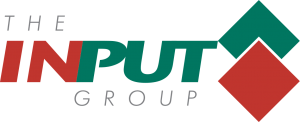Yes we know this sounds like a boring subject. But it’s critical when it comes to health and safety.
Let’s kick off with a question.
How do you record accidents, near misses and incidents?
We’re asking this because the UK has the lowest fatal injury rates across Europe PLUS self-reported workplace injuries and ill health is way below the EU average (HSE, 2020).
This is great news if it’s an accurate picture.
But is it?
There’s no doubt even the most robust reporting system might have dirty data or missing information.
Worse sometimes the statistics for wellbeing surveys, sickness analysis and lost time accidents are not meaningful because there’s no picture to be formed from numbers.
Making operational decisions on data with no picture could have a detrimental effect on health and safety in your workplace.
So what does good look like?
First let’s address that employers have a legal obligation to report on RIDDOR; did you know that? And do you know what this means in practise? RIDDOR in principle should give an accurate picture on work related injuries and ill health.
Here’s some of the health and safety things that are essential you keep accurate data for:
- Your health and safety policy review date
- Risk assessment register with ALL of your up to date risk assessments, including but not limited to;
- General risk assessments;
- COSHH assessments;
- Display Screen equipment workstation assessments;
- Fire risk assessments;
- Manual Handling operations;
- Machinery / equipment;
- Lifting equipment and lifting operations;
- Lone working;
- Noise and vibration;
- Accident book and record sheets with accident forms too
- Near miss reports
- The findings of every health and safety inspection (or safety walk)
- Occupational health records
- Training records (manual handling, working at height, first aid etc)
- Machinery and equipment records
- Consultations with staff
- Fire drill
HOW you record this data is totally up to you; there’s lots of ways from paper log books (less easy to analyse) through to standard software like Excel for spreadsheets or specific health and safety platforms.
Our suggestion is electronic; it makes it easier for you to see what is going on each month (or week!), easier to share the data with the relevant parties (your H&S consultant or the HSE) and keeps an easy to access log should any investigations arise.
When it comes RIDDOR here’s what should you be recording ready to report:
- Deaths and injuries to people; have a look at what injuries need to be reported here Specified injuries to workers – RIDDOR – HSE
- Occupational diseases; here’s what those are Occupational diseases – RIDDOR – HSE
- Any exposure to carcinogens, mutagens and biological agents; find our more here Exposure to carcinogens, mutagens and biological agents – RIDDOR – HSE
- Dangerous incidents and occurrences on your sites; more on those are here Dangerous occurrences – RIDDOR – HSE
- Any incidents with gas; from death through to hospitalisation due to gas exposure.
If you’re in need of support with what health and safety data you should be recording and if your data is up to scratch for giving a truly ACCURATE picture of the health, wellbeing and safety of your employees, subcontractors and site visitors get in touch.




